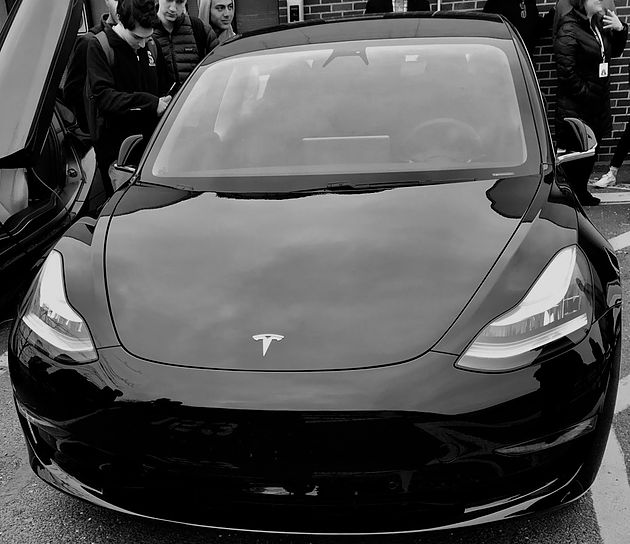Mid-Price Model 3 Expected To Begin Deliveries in June
It’s a nice problem to have. Last summer, Elon Musk announced that due to too much demand, Tesla was suspending production of its long-range, non-performance variant of the Model 3. Now, it’s back.
According to the Tesla.com configurator, the vehicle now costs $47,240 before options, taxes and destination charges, or $6,000 less than the performance version. That’s today, anyway. Like the performance Model 3, it comes with dual-motor, all-wheel drive. 0 to 60 acceleration is 4.2 seconds, compared with 3.1 in the performance trim. We haven’t fully gone through the purchase funnel, but the previous version of the non-performance trim offered a post-purchase $2,000 “faster acceleration” upgrade.
Lithium Iron Phosphate (LFP) Battery
Where the new version appears to differ from the prior version is the battery. This is a shorter, long-range version at 325 miles, compared to 358 miles previously. Also, the vehicle is eligible for half of the Inflation Reduction Act (IRA) purchase incentive or $3,750. Taken together, the shorter range and lower incentive indicate that Tesla is using some variation of the Lithium Iron Phosphate (LFP) battery that it has been using in the RWD standard-range Model 3.
Based on how the IRA incentive works, the minerals for these batteries are most likely coming from Tesla’s Chinese battery partner, CATL, with battery assembly occurring in one of Tesla’s domestic plants. In a couple of years, when the “foreign entities of concern” rule phases in, which will exclude all things China, the vehicle will either lose the incentive entirely or Tesla will have to set up an IRA-compliant supply chain.
LFP batteries have some advantages, such as lower cost, no use of cobalt or nickel, and excellent durability. They are, however, less energy-dense and reportedly more subject to cold-weather range loss, but the chemistry is evolving and we have not seen any data at this point for this new vehicle. (This is the first production-version LFP battery to exceed 300 miles of range.) These batteries can be routinely charged to 100% with no consequences. So, as a practical matter, for daily use, if an owner of the prior lithium-ion long-range vehicle charged to 80%, the mileage nets to 286 miles, less than the 325 for the new battery.
We expect to see more EVs with LFP batteries. For example, Ford announced a partnership with CATL to build an LFP factory in Michigan. (The IRS rule making has not yet addressed whether a domestic battery venture with a Chinese company will be incentive-eligible. Iron has not been classified as a critical mineral, which may help.) 3 major South Korean battery companies (Samsung, LG, and SK) have been reported by Bloomberg to have LFP projects under development, including in North America. Bloomberg also reports, aside from Tesla and Ford, that Mercedes, Volkswagen, and Rivian are moving to incorporate LFP batteries.
Small Difference After Incentive
Unlike this new long-range and the standard range, the performance Model 3 is eligible for the full IRA incentive. That nets out to only a $2250 difference between the performance and long-range trim levels. We welcome the re-introduction of this intermediate trim level, but will this relatively small net difference be enough to matter?
The other thing that is orbiting is that Tesla is redesigning the Model 3. Details are few at this point but both the vehicle and the pricing could be affected.



